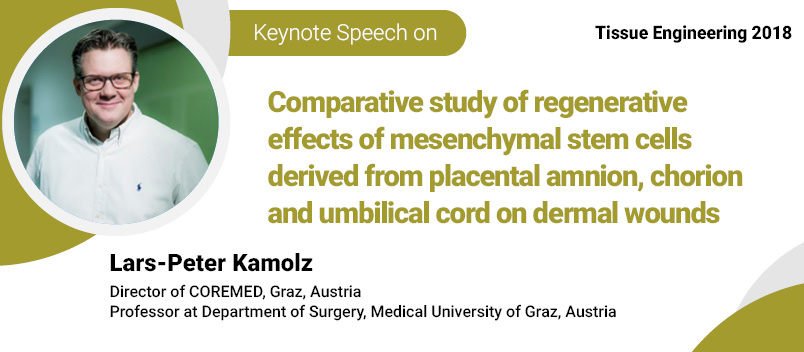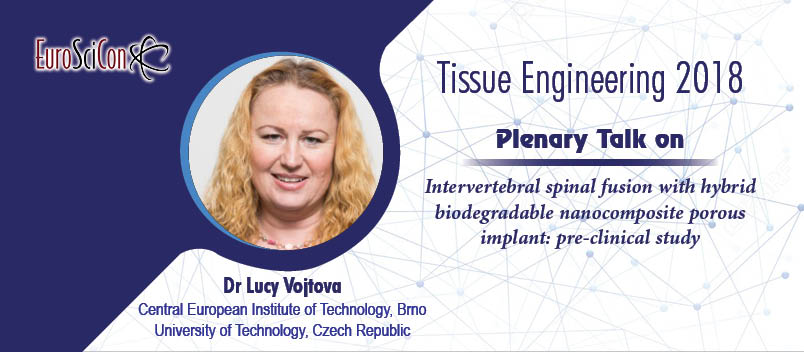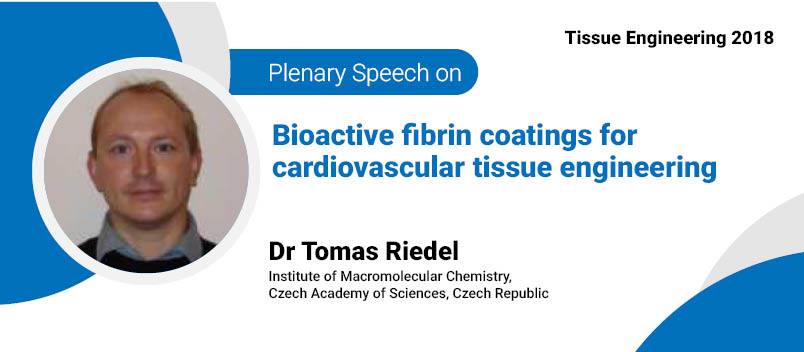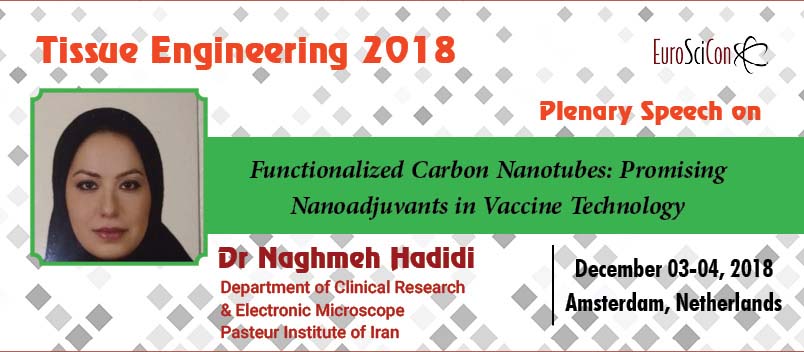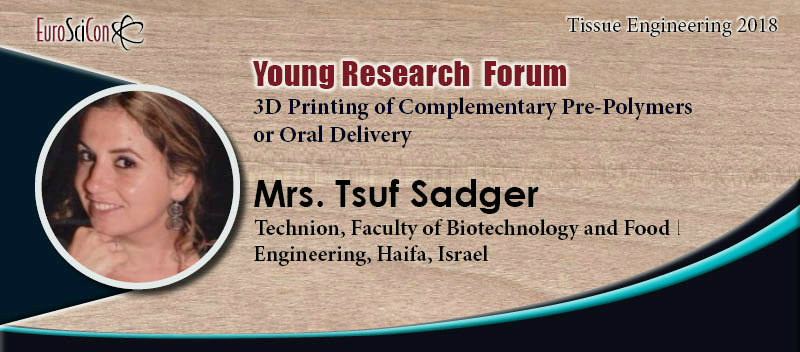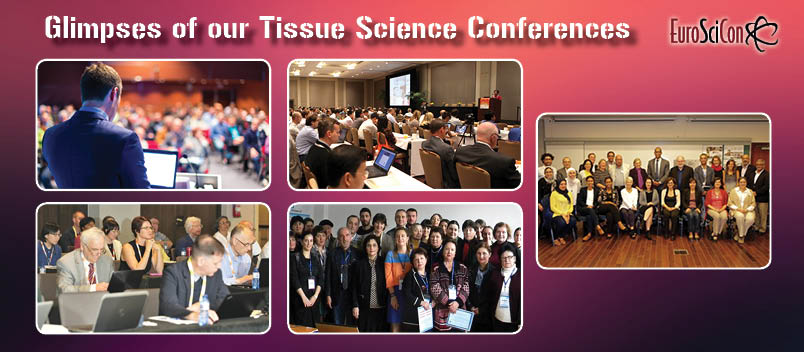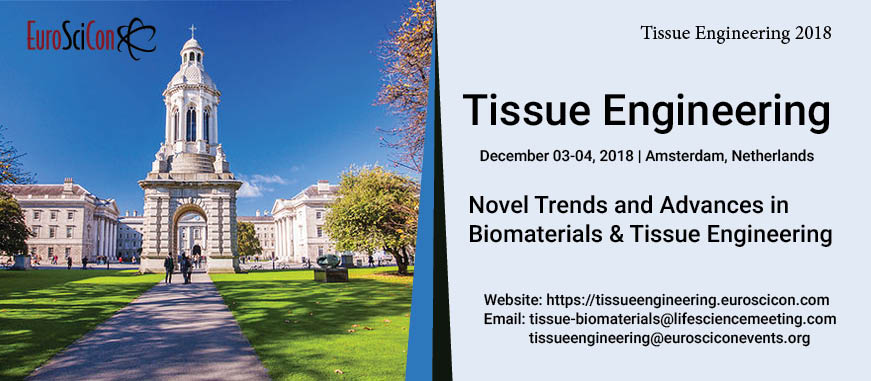Tissue Engineering 2018
About Conference
Biometarials and Tissue Engineering Conferences
EuroSciCon warmly respects each one of the individuals and supporters from worldwide to attend "International Conference on Biomaterials & Tissue Engineering” amid Dec 3-4, 2018 in Amsterdam, Netherlands. This Tissue Engineering Conferences overwhelmingly emphasis on “Novel Trends and Advances in Biomaterials & Tissue Engineering”.
We warmly welcome every one of the members of world's driving Scientists, Researchers and Scholars. We give a stage to youthful scientists and understudies to display their exploration through oral introductions through which they can build up an establishment for joint effort among youthful analysts.
The sorting out panel goes for setting a stage for all the growing researchers and scientists to exhibit their constant work and offer their perspectives and viewpoints identified with the topic of the gathering. The sorting out advisory group is preparing for an energizing and educational meeting program including whole addresses, symposia, workshops on an assortment of themes, publication introductions and different projects for members from everywhere throughout the world. The gathering gives best open door for meeting with Industrial specialists, Academic speakers, Pharmaceutical Companies, Decision-producers, interfacing and characterizing novel prospects in Biomaterials business. It helps in progressively increasing the value of biomedical, pharmaceutical, R&D organizations. Novel methodologies and applications about biomaterials like the quality/sedate conveyance frameworks improvement and industrializing bits of knowledge and pick up the most recent innovations about novel biomaterials and bionanomaterials.
These International Tissue Engineering Conferences proceedings include symposiums and workshops, keynote speeches, plenary talks, poster sessions and panel discussion on latest research developments in the field of biometarials and tissue engineering.
Euroscicon are corporate members of the following organisations
Royal Society of Biology
IBMS
British Society for Immunology
Rare Care UK
Opportunities for Conference Attendees
For Researchers &Faculty:
Speaker Presentations
Poster Display
Symposium hosting
Workshop organizing
For Universities, Associations & Societies:
Association Partnering
Collaboration proposals
Academic Partnering
Group Participation
For Students & Research Scholars:
Poster Competition (Winner will get Best Poster Award)
Young Researcher Forum (YRF Award to the best presenter)
Student Attendee
Group registrations
For Business Delegates:
Speaker Presentations
Symposium hosting
Book Launch event
Networking opportunities
Audience participation
For Companies:
Exhibitor and Vendor booths
Sponsorships opportunities
Product launch
Workshop organizing
Scientific Partnering
Marketing and Networking with clients
Euroscicon organizes International Nutrition Meetings annually across Europe, Austria, Ireland, Germany, France, Liechtenstein, Lithuania, Finland, Luxembourg, Hungary, Italy, Norway, Poland, Denmark, Macedonia, Greece, Portugal, Romania, Czech Republic, Switzerland, United Kingdom, Belgium, Scotland, Latvia, Ukraine, Sweden, Denmark, Spain, Netherlands Russia, Bulgaria, France, with solitary subject of quickening logical revelations.
Tracks:
Tissue Engineering
Gene and Immunotherapy
Biomaterials and Bioengineering
Biotechnology and nanotechnology in stem cells
Soft Tissue Replacement
Stem Cell Bioprocessing
Biomedical Engineering Techniques
Artificial Organs
Regenerative Medicine
Tissue Repair and Regeneration
Stem Cell Treatments
Cellular and gene Therapies
Bone Tissue Engineering
Bio Banking
Dental Biomaterials
Advanced Materials
Tissue Engineering and Regenerative Medicine
Polymer Biomaterials
Biomaterials and Nanotechnology
3D printing of Biomaterials
Biophotonics and Biomedical Optics
Bio-based Materials and Sustainability
Biomaterials in Delivery Systems
Biodegradable Biomaterials
Session and Tracks
Track 1: Tissue Engineering
Tissue Engineering is an interdisciplinary field which includes, bioengineering ,materialscience, lifescience that is probably going to reform the ways we improve the health and personal satisfaction for many individuals worldwide by reestablishing, keeping up, or improving tissue and organ work. More likely tissue engineering is the improvement of manufactured tissue and organ frameworks. Built tissue is framed by the utilization of a platform (characteristic or a biodegradable engineered structure) that as a rule has human cells embedded preceding the implantation of the framework in the patient. The wellspring of cells differs, however the favored sources are cells gotten from the patient, (for example, bone marrow or muscle biopsy) to keep away from any insusceptible reaction issues by utilizing the patient's own particular cells.
- Cell isolation
- Cell seeding
- Scaffolds
- Invitro culturing
- Cell harvesting
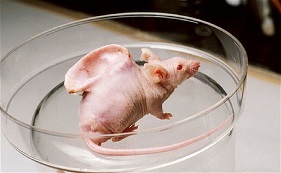
Track 2: Biomaterials and Bioengineering
Biomaterial Science is the biological and physical study of materials and their interaction with biological environment. Biomaterials is nonviable material (incapable of independent growth ) used in medical device meant to interact with biological systems. Biomaterials are mainly utilized as a part of restorative application like drug delivery, therapeutics, and diagnostics to replace a natural function. The most generally utilized biomaterials are polymers. Bioengineering is a “bridge” that couples fundamental engineering principal with biology. It is the study of biological systems to the development of novel solutions that address a diverse range of problems in medicine, human health, ecology, and sustainable energy
- Types of biomaterials
- Use of biomaterials
- Behavioral response of biomaterials
- Polymer
- Properties of biomaterials
- 3D PrinterGene
- Vector Design
- Resorbable biomaterials
- Soft materials
- Computational studies of biomaterials
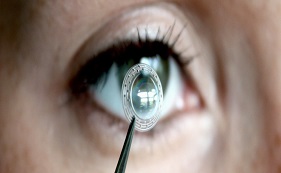
Track 3: Tissue Repair and Regeneration
Tissue Regeneration implies regrowing or reestablishing the harmed or missing organ part from the rest of the tissue. Numerous embryonic tissues, for example, the spinal cord, heart, and limbs, have some regenerative potential and may use systems that can be exogenously initiated in adult tissues. By utilizing smaller molecular and cell pathways embryonic improvement can be restated by Tissue Regeneration.
- Tissue Biomarkers
- Cellular & Molecular mechanisms
- Translational Diagnostics
- Connective Tissue Deposition
- Advancements in Biomedical & Tissue Engineering Techniques

Track 4: Tissue Engineering and Regenerative Medicine
Regenerative medicines tries to supplant tissue or organs that have been harmed by disease , congential issues,or trauma versus the current clinical system that spotlights essentially on treating the manifestations. The tools used to understand these results are tissue designing, cell treatments, and therapeutic devices and artificial organs.
- Cellular Therapies
- Organ Transplantation
- Clinical Translation
- Periodontal Therapy
- Innovations Regenerative and Tissue Engineering
- Medical Devices And Artificial Organs
- Regenerative Medicine Approach

Track 5: Gene and Immunotherapy
Biotherapy for the most part alludes to the mediation and the treatment of basic sicknesses with biotechnologies or bio-drugs, including the revelation of helpful focuses by pathology examination and the advancement of biotechnologies related with gene therapy, immunotherapy, undeveloped cell treatment and tissue engineering (bone, heart, liver and so forth.) Gene therapy is the intentional modulation of gene expression in specific cells or tissues to treat pathological conditions and immunotherapy can be outlined as the treatment of illness by directing insusceptible reactions, for the most part by immunizations and antibodies.
- Immune system-targeted therapies
- Endocrinological (hormonal) therapies
- Tyrosine kinase inhibitor therapy
- Gene therapy
- DNA repair enzyme inhibitor therapy
- Adoptive cellular therapy

Track 6: Biomedical Engineering Techniques
Biomedical engineering is the use of designing standards in outlining procedures and innovation to medication and science for human services purposes. This field link the gap between engineering and medicine, combining the design and problem solving skills of engineering with medical and biological sciences to advance health care treatment, including diagnosis, monitoring, and therapeutics. The field changes from being an interdisciplinary specialization among officially settled fields upgrade the effect of medicinal services. Biomedical methods on tissue science and regenerative drug are , Tissue Mechanics, Biopatterning innovation, Bio-roused Computing to advance tissue recovery.
- Molecular and Cellular Engineering
- Tissue Engineering
- Bio medicine
- Bio Medical Instrumentation
- Mechanobiology
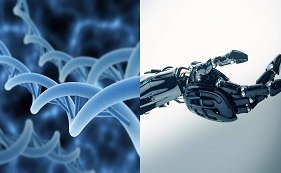
Track 7: Applications of Tissue Engineering
Tissue Engineering includes logical regions, for example, cell science, material science, science, sub-atomic science, building and solution. Tissue Engineering is developing as a lively industry with an immense potential market incorporates hereditary, biotechnology, cell and quality treatment advertise. Applications in perspective of the biomaterials, platforms, counterfeit organs, and isolating cells merged to make a tissue assembling thing address basic restorative needs, and the real use of Tissue Engineering is observed to be bio managing an account, treatment against uncommon and basic ailments.
- Cartilage Tissue Engineering
- Bone Tissue Engineering
- Bio Molecules
- Regeneration Of Damaged Tissues
- Cardiac Tissue Engineering
Track 8: Advanced Materials
Biomaterials are substances which cooperate and respond with the natural framework either as a piece of the therapeutic devices or as a section to supplant or repair any harmed organs or tissues. Biomaterials can be determined either normally or artificially. Regular Biomaterials are silk, gelatin, and so forth while the Synthetic ones are the different polymers. Bioceramics like Alumina, Bioglass, Zirconia are utilized to repair harmed segments of the musculoskeletal framework and furthermore utilized as a part of dental and orthopedic fields. Biocomposites are shaped by utilizing pitch and normal filaments. It can be non-wood normal filaments (rice, wheat, coconut, and so forth.) or wood strands (magazines, delicate and hardwoods). Metals are for the most part a decision of biomaterials in fields of dental, orthopedic, cardiovascular inserts. As metals can prompt wear, erosion, so surface covering and alteration of metals are important for medicinal applications.
- Orthopedic Biomaterials
- Energy Materials
- Graphene and Perovskite Materials
- Diamond Based Materials
- Renewable Biomaterials
- Bioactive glasses
- Protein based biomaterials
- Semiconductors
- Marine Biomaterials
- Smart Biomaterials: Metallic Biomaterials
- Synthetic Biomaterials
- Natural Biomaterials
- Composite Biomaterials
- Ceramic Biomaterials
- DNA and RNA as biomaterials

Track 9: Tissue Regeneration Using Nanotechnology
The current combination of developing nanotechnology into tissue science and biomedicine has achieved an extent of creative nano building endeavors for the repair and recovery of tissues and organs. Nano patterns alone can direct the differentiation of stem cells without involvement of exogenous soluble biochemical factors. This control of cell conduct by nanotechnology in tissue engineering is one of the case exhibiting the huge utilizations of nanotechnology in biomedicine.
- Effects of Guided Tissue Regeneration
- Nano Drug Delivery Systems
- Nanotechnology in Regeneration of Complex Tissues
- Molecular Nanotechnology- Medical Applications

Track 10: Cellular and Gene Therapies
Cell Therapy is the transfer of cells into a patient and GeneTherapy is the modification of hereditary material inside a cell with an expectation of curing the disease. In biomedical research cell and gene therapy are the covering fields with the objectives of repairing the immediate cause of genetic disease in DNA or cell populace separately. In the early-stage clinical trials of Cell and Gene Therapy products regularly includes the thought of clinical wellbeing issues, preclinical issues, and assembling and controls (CMC) issues that are experienced.
- In-Vivo Gene Transfer
- Ex-Vivo Gene Transfer
- Gene doping
- Allogeneic Cell Therapy
- Applications Of Gene Therapy

Track 11: Bone Tissue Engineering
Bone and ligament both are the most critical segments in the skeleton framework, giving the significant structure of the assortment of vertebrates and giving protection to delicate tissues. Tissue building of musculoskeletal tissues, particularly bone and ligament, is a quickly creating field. In bone, innovation has focused on bone unite substitute materials and the improvement of biodegradable frameworks. As of now tissue building systems have included cell and quality treatment. The accessibility of development factors and the growing learning base concerning the hereditary qualities and direction of bone arrangement have grown new materials for tissue-building applications.
- Bone Tissue Engineering
- Bone Scaffolds
- Bone Grafting
- Mechanical Stimulation- Bone Regeneration
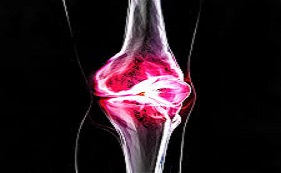
Track 12: Soft Tissue Replacement
Soft tissue inserts applications include building standards, the execution of an embedded device inside the host which principally relies on both the sort of materials utilized and the manufactured outline of the device or embed. The underlying determination of material ought to be founded on sound materials designing practice and additionally prerequisites. The final material Selection judgment on the appropriateness of a material relies on in-vivo clinical execution perception of the embed for particular time span. The necessity of in-vivo perception speaks to significant issues in the choice of proper materials for use inside human body, the execution of an embed which may rely upon the manufacture plan instead of the materials, expertise of the specialists and the earlier state of patients.
- Cellular Interaction of Biomaterials
- Growth and Differentiation Factors
- Biomimetics
- Stem Cell Treatment
- Scaffold Product
- Biological Active Molecules

Track 13: Stem Cell Treatments
Stem cell treatments are a type of intervention strategy that introduces new adult stem cells into damaged tissue in order to treat disease or injury The ability of Stem Cells to selfâ€Ârenew offers significant potential for generation of tissues that can potentially replace diseased and damaged areas in the body, with minimal risk of rejection and side effects.
- Sources Of Stem Cells
- Hard Tissue Repairs and Stem Cells
- Orthopedic Repairs and Stem Cells
- Medical Devices and Artificial Organs
- Advancements In Biomedical and Tissue Engineering Techniques
- Organ Transplantation and Its New Techniques

Track 14: Artificial Organs
A Bioartificial organ is a designed device or tissue which is consolidated into human body to supplant a characteristic organ .It joins biomaterials and natural cells for completely substitution of patient disappointment organs. Example of bioartificial organ are bioartificial kidney device, joining biomaterials and kidney epithelial cells for enhanced blood detoxification, bioartificial pancreas device, consolidating exemplification of pancreatic cells for treatment of diabetes, bioartificial lungs for considering lung recovery.
- Prosthetic Cardiac Valves
- Artificial Lung (oxygenator)
- Bio Artificial Windpipe
- Artificial Kidney (Dialyser membrane)
- Dental Implants
- Artificial Blood
- Artificial Heart
- Artificial Skin

Track 15: Bio Banking
Biobanking alludes to the procedure in which sample of body fluid or tissue are collected for to enhance our comprehension of wellbeing and diseased condition. Biobanking assume a significant part in biomedical research. The wide cluster of biospecimens examples (counting blood, salivation, plasma, and purged DNA) kept up in biobanks can be depicted as libraries of the human life form. They are characterized to determine general and unique features of continuous cell lines and presence or absence of contamination, in this way setting up a key comprehension about the raw material from which the biological product is being determined and kept up. Biobanks list examples utilizing hereditary and different qualities, for example, age, sex, blood classification, and ethnicity.
- Cryopreservation methods
- Biobanking & expertise networks
- Bio preservation and its Advances
- Next generation Biobanking
- Bio specimen and Biorepository
- Scaffolds for Tissue Engineering
- Biobanking for rare disease

Track 16: Biomaterials and Nanotechnology
Bionanomaterials are molecular materials made mostly or totally out of natural particles and bringing about structures having a Nano-scale-measurement. Magnetic nanomaterials are the magnetic particles of Nano size that are having selective attractive properties. They are existing in various structures, for example, dry powders, as surface functionalized powders or as steady scatterings in an assortment of solvents, both fluid and natural. These Bionanomaterials will have conceivable applications as novel strands, sensors, cements and so fort. Nano biomaterials are utilized for recovery rehearses, disease treatment, and the polymeric ones are vital for quality conveyance frameworks. Nanofiber scaffolds have diameter less than100 nms. Nano platform is a strategy to regrow tissue and bone, likewise utilized as a part of undifferentiated cell development.
- For Cancer Treatment
- For Dental/Cranio-Maxillofacial Repair/Regeneration
- Magnetic Nanomaterial
- Nano Fiber Scaffolds for Stem Cell Expansion
- Polymeric Nanoparticles for Gene Delivery
- Nanobio Interfaces
- Carbon Nanotubes and Nanostructure

Track 17: Dental Biomaterials
Dental Biomaterials incorporate both the utilization of regular and manufactured dental tissues like veneer, cementum, dentin and polymers, composites, ceramics. Dental bio materials are utilized to repair decayed teeth. These biomaterials are of various kinds i.e. orthodontics, supports, inserts, and so forth. Orthodontics is a piece of dentistry that prompts the arrangement of teeth and jaws to enhance oral wellbeing. Props are principally utilized as a part of orthodontics to fix teeth and to treat anomalies in teeth. Dental inserts are the barrel shaped structures made up of titanium, which is utilized as a substitute for any missing teeth. Prosthesis implies a device intended to supplant a missing piece of the body Diseased or missing eyes, arms, hands, legs, or joints are supplanted by utilizing prosthetic devices. False teeth are known as dental prostheses.
- Implants and prosthesis
- Orthodontics Braces
- Advanced surgeries and complex cases
- Restorative implants
- Orthodontics and craniofacial research
- Implant surgery
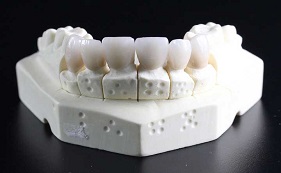
Track 18: Polymer Biomaterials
Polymers are the macromolecules accomplished from different rehashed subunits. Polymers are utilized as biomaterials and that can be of the accompanying sorts, i.e., Natural Polymers: Chitosan, Collagen, Alginate. These characteristic polymers are utilized for sedate conveyance, wound dressing and tissue designing. Engineered Polymers like Polyvinylchloride (PVC),Polypropylene, Polymethyl methacrylate are utilized as a part of inserts, therapeutic expendable supplies, dressings, and so on. Biodegradable Biomaterials: Polyactide, Polyglycolide, and so on. It is profitable as it recovers tissue and does not leave remaining follows on implantation. For the most part utilized for tissue screws, ligament repair and medication conveyance frameworks. Biopolymers are those which are built up from the living life form example DNA, RNA, proteins, sugars, and so on. It can likewise be utilized as packaging material. Polymer composites are broadly utilized for preparing medical implants.
- Biodegradable polymers as Biomaterials
- Implanted polymer composites
- Polymers as Biomaterials
- Biopolymers for food packaging
- Micro and nano blends based on natural polymers
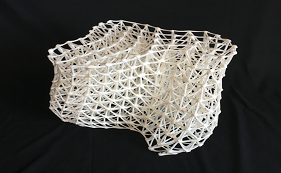
Track 19: 3D printing of Biomaterials
3D printing is the way toward making three-dimensional structure of biomaterials by using computer conrol. As for the nano-scale measurements the biomaterials are arranged into three sorts as-Nano-molecule (3D), Nano-fiber(2D) and Nano-sheet (1D). 3D bioprinting is the arrangement of various cell designs by utilizing printing strategies alongside the layer-by-layer technique to create tissue mimetic structures with no damage in cell work that can be additionally utilized as a part of tissue building. Electrospinning innovation implies deposition of polymer nanofibers on an object by utilizing high voltage to a fluid polymer arrangement. Bioprinting helps in the examination of medications and pills by printing tissues and organs. It is likewise utilized for smaller scale device and microarrays. The 3D printing materials showcase is relied upon to achieve USD 1,409.5 Million by 2021 from USD 530.1 Million out of 2016, at a CAGR of 21.60%.
- Layer-by-layer: 1, 2 and 3D nano assembly
- Electrospinning and allied technologies
- High-energy handling of biomaterials
- Hierarchical three dimensional structures
- Use in micro devices and microarrays
- Combinatorial approaches to biomaterial design
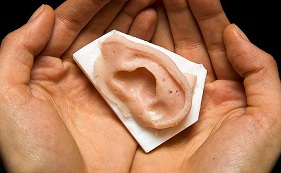
Track 20: Biodegradable Biomaterials
Biodegradable biomaterial are those that are anticipated to get degraded in the body safely. The metals will be for the most part magnesium based or iron based alloys. They are mainly helpful for cardiovascular embeds as stents and orthopedics. Hydrogels are the polymeric materials including water, that was the essential biomaterials utilized. They help in tissue building, implantable device, biosensors, materials controlling the action of proteins, and so forth. Corruption of Biomaterials is a difficult issue for any therapeutic device whether it is counteracting degradation of implantable device or foreseeing the amount of degradation of tissue building frameworks or medication discharging components. Nanofiber platforms are utilized for orthopedic tissue repair and recovery. Biomimetic materials are those materials that are skilled to imitate the host framework by indicating cell reactions encouraged by platforms and peptide communications from extracellular network.
- Biodegradable polymers
- Hydrogels
- Biomimetic materials
- Degradation analysis
- Bioresorbable materials and membranes
- Nanofiber scaffolds

Track 21: Biomaterials in Delivery Systems
Biomaterials plays an important role in delivery systems mainly in drug delivery. Numerous kinds of drug delivery systems, surgical implants, wound closure devices, artificial organs are usually dependent on biomaterials. Biomaterials are helpful in gene delivery that in due course make transgene expression and tissue growth along with regeneration of tissues. Immunomodulation i.e., modulating or altering several features of immune system, the power and competence of regenerative medicine therapies can be enlarged. At present, hydrogels are termed as the smart drug delivery system, that are often used as sustained drug release systems, which has importance in the healing of cancer. Extracellular media or vesicles are used for the macromolecular drug delivery. Biomaterials can also be used for islet delivery, for imaging, etc.
- For islet delivery
- In gene therapy
- Polymeric hydrogels for drug delivery
- Extracellular media for therapeutic delivery
- Tissue targeting nanoparticles
- Drug-processing devices
- Theranostic delivery
- RNAi-enabled biomaterials
- Immunomodulation in regenerative medicine
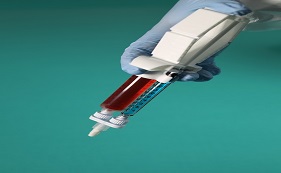
Track 22: Biophotonics and Biomedical Optics
Biophotonics is the investigation of optical procedures in human organic frameworks, which happens normally and in bioengineered or biosynthesized materials.. The imperative element of this field is imaging and recognizing cells and tissue. It likewise includes infusing fluorescent markers into an organic framework to track cell elements and medication conveyance. Biophotonics is correspondingly used to examine organic materials or materials with resources like natural material, i.e., scrambling material, on a tiny or plainly visible scale. On the minute scale basic applications include microscopy and optical intelligence tomography. On the plainly visible scale, the light is diffuse and applications regularly manage diffuse optical imaging and tomography. Biomedical optics emphasizes on the outline and utilization of cutting edge optical procedures to determine issues in drug and science.
- Clinical and Biomedical Spectroscopy and Imaging
- Optical Coherence Tomography and Coherence Techniques
- Photonic Therapeutics and Diagnostics
- Medical Laser Applications and Laser-Tissue Interactions
- Biomedical Spectroscopy, Microscopy, and Imaging
- Clinical and Biomedical Spectroscopy and Imaging
- Tissue Optics, Laser-Tissue Interaction, and Tissue Engineering
- Nanophotonics
- Neurophotonics, Neurosurgery, and Optogenetics
- Bioluminescense
- Optical Trapping Applications
- Optical Molecular Probes, Imaging and Drug Delivery
- Bio-Optics: Design and Application
- Biosensing and Bioimaging
- Biofuels

Track 23: Bio-based Materials and Sustainability
Bio-based material are formed by means of present living forms (rather than non-renewal non-sustainable energy sources that are produced by old plants), with agricultural deposits , trees, and green development. "Sustinable biomaterials" are those which are acquired from financially created and accumulated cropland or forests. They are manufactured without hazardous data sources and impacts, and furthermore stable and safe for the earth in the midst of use. These materials can be reutilized by the means of recycling or fertilizing the soil.
- Biopolymers
- Photovoltaics
- Novel Techniques in Microscopy
- Forest Biomaterials
- Integrated Biorefineries
- Agricultural Biomaterials
- Bioenergy
- Biochemicals
- Biomass
- Bio-based Materials
- Sustainable Biomaterials
- Bioplastics

Track 24: Trending research in Biomaterials
NASA at present deals with biomaterials for space research . NASA almost grants $100,000 to the examination on 3D printing of biomaterials. NASA proposed to print anything from tools and composite building materials to sustenance and human tissues. For instance, being on any planet with the capacity to supplant any broken part, regardless of whether it's a piece of your spacesuit, your natural surroundings, or your own body. They are chipping away at a strategy that would simply permit that. With the guide of printing 3D cells which secrete the important materials. The materials will be of naturally inferred materials, the novel which was impossible to fabricate.
- Amino acids
- Micro dispensing system
- Organic inorganic laminate
- Fabrication

Learn More
Tissue Engineering based Universities in Europe:
KTH Royal University | Tissue Engineering Conferences 2019 | Imperial College London | ETH Zurich | University of Cambridge | KU Leuven | University of Groningen | Regenerative Medicine Conferences | Trinity College Dublin | University of Sheffield | Pompeu Fabra University | Sorbonne University | Charles University | University of Pardubice | University of Copenhagen | Aalto University | University of Grenoble | Lille University | University of Lyon | Chimie Paris tech | University of Poitiers | Tissue Engineering Conferences | University of Pau and Adour Country | University of Reims Champagne-Ardenne | University of Strasbourg | University in Aachen | University of Bayreuth | Technical University of Berlin | Ruhr University Bochum | Sapienza University of Rome | University of Navarra | University of Oxford | University of Bologna | University of Antwerp | University of Bonn | University of Alicante
Tissue Engineering based Universities in USA:
West Chester University | Indiana University | Purdue University Indianapolis | State University of New York | Binghamton University | State University of New York | University of Arizona | Community Colleges of Spokane | Valencia College | Madonna University | San Jose State University | Virginia Commonwealth University | University of Alabama | Virginia Tech | St. John's University | Northern Arizona University | Arizona State University | University of Cincinnati | Colorado State University | Kent State University | Mississippi State University | Western Michigan University | Biomaterial Conferences | Montana State University |Texas A&M University | University of New Mexico | California State University | University of Maine | Wright State University | Old Dominion University | Long Island University | Loyola University Chicago | Troy University | Wichita State University
Tissue Engineering based Universities in Asia:
Nanyang Technological University | Tsinghua University | National University of Singapore | Peking University | University of Tokyo | Nanjing University | Kyoto University | Fudan University | University of Science and Technology of China | Osaka University | Korea Advanced Institute of Science and Technology | East China University of Science and Technology | Dalian University of Technology | Xiamen University | Jilin University | Nankai University | Tohoku University | National Taiwan University | Seoul National University | Shanghai Jiao Tong University | King Abdullah University of Science & Technology | Hong Kong University of Science and Technology | KAIST - Korea Advanced Institute of Science and Technology | City University of Hong Kong | Peking University | Chinese University of Hong Kong
Tissue Engineering based Societies:
European Tissue Engineering Society (ETES) | European Tissue Repair Society | UK society for Biomaterials | British Society for Gene and Cell Therapy | Japanese Society for Regenerative Medicine | European Society of Regenerative Medicine | European Society of Gene and Cell Therapy (ESGCT) | International Society for Cellular Therapy (ISCT) | International Stem Cell Society | Cancer Stem Cell Society | European Society of Stem Cell Biology | IPLASS International Placenta Stem Cell Society
Tissue Engineering based Hospitals:
Boston Children's Hospital | Cincinnati Children's Hospital | Tissue Engineering Conferences | Nationwide Children’s Hospital | University of Pittsburgh Medical Center (UPMC) | Alta Bates Summit Medical Center | Center for Stem Cell and Regenerative Medicine | Regenerative Medicine Conferences 2019 | Infinity Clinic | Unique Cell Treatment Clinic | EmCell Clinic | German International Clinic | First Bio Dent-Clinic | Kolan Hospital Group | Placid Way Germany Medical | National Center for Regenerative Medicine | Stem Cell Therapy for Diabetes
Tissue Engineering based Industries:
Synthecon Industry | Cell Serve Laboratory | Cell Therapies | Biomaterials Conferences | Living Cell Technologies | Bone Therapies | Regen Bio Pharma | Cellular Biotechnologies | Immatics Biotechnologies | Tissue Engineering Conferences | Bio fabrication for Medicine (Morini) Laboratories | Regenerative Medicine Laboratories | Vericel Industry | Kolon Tissue Gene Laboratories | Novartis Industries | Pharma Cell | Tissue Science Conferences USA | Kiadis Pharma | Mesoblast Industries | Vet Stem Biopharma Industries | OncoMed Pharmaceuticals | Invivo Gen Therapeutics | Stem Cell Conferences 2019 | New Link Genetics | Cytori Therapeutics | Celther Polska | Cell Therapy Conferences | OxStem Industries
Tissue Engineering based Journals:
Journal of Cell Tissues Organs | Journal of Calcified Tissue Research | Journal of Cell and Tissue Biology | Journal of Cell Stem Cell | Journal of Cell and Tissue Research | Journal of Cellular Therapy and Transplantation | Journal of Hard Tissue Biology | Journal of Tissue Science | Journal Of Tissue Engineering | Journal of Tissue Antigens | Journal of Tissue and Cell | Regenerative Medicine Conferences | Journal of Tissue World | Journal of Cell Biology | Journal of Toxicology | Journal of Cell Transplantation | Journal of Cell Metabolism | Journal of Cellular Biology Research | Journal of Molecular Biology Research | Journal of Regenerative Medicine | Journal of Stem Cells | Journal of Stem cells and Development | Journal of Biomaterials | Biomaterial Conferences 2019 | Journal of Biomaterials and Tissue Engineering | Journal of Stem Cells and Regenerative Medicines | Journal of Cell Regeneration | Journal of European Cells and Materials | Journal of Nature Cell Biology | Journal of Molecular Cell | Journal of Trends in Cell Biology | Cell Therapy Conferences | Journal of BMC Biology | Journal Of Molecular Cell Biology | Journal of Cellular Life Sciences | Journal of Molecular Life Sciences | Journal of Molecular Biology of the Cell | Journal of Cancel Cell
Market Analysis
Tissue Engineeering
The worldwide tissue designing business sector estimate was esteemed at around USD 5 billion out of 2016 and is relied upon to develop at a sound development rate. Developing capability of tissue building methods in the treatment tissue harms is supporting the market development.
View Research, Inc. As per the U.S. Focuses of Medicare and Medicaid, in excess of 900 million medical procedures are performed for bone reproduction or substitution. Expanding instances of unending illnesses, street mischances, and injury wounds is adding to the development being developed of tissue building arrangements. What's more, the subsidizing by government for the progressing research for tissue recovery is a noteworthy driver for showcase development.
At present utilized tissue repair arrangements incorporate medical procedures, restorative gadgets, and transplants. Tissue building methods have a gigantic potential to supplant the customary tissue repair choices. The mechanical progressions in 3D tissue building, including utilization of 3D bio-printers to plan in-vitro embeds and supplanting of developing life cells with proliferative immature microorganisms are probably going to support the market development in the years to come.
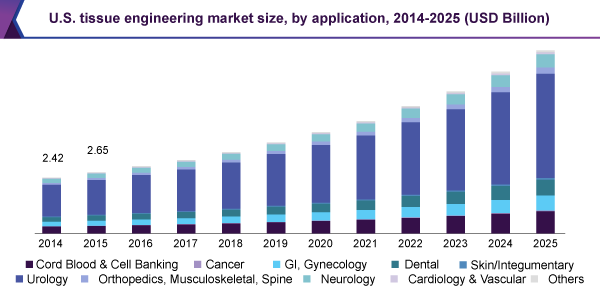
Further Key Findings From The Report Suggest:
- Orthopedics, Musculoskeletal, and Spine fragment held lion's share of the application income in the year 2014, because of research financing and new item advancements.
- Geistlich Pharma propelled bone-reaping instruments in 2016, for the gathering of autogenous bones. This item reestablishes bone volume and properties.
- Cardiology and vascular portion is probably going to develop at the speediest rate in the coming years, relating to quickly rising rate of cardiovascular illnesses because of way of life changes.
- The center around cardiovascular tissue designing arrangements is required to increment as cardiovascular issue is one of the real reasons for death over the globe.
- North America held dominant part of income share, because of quality of significant market players in the district, enormous R&D subsidizing, and developing base of geriatric populace.
- Zimmer Biomet procured Ortho Transmission for its spearheaded innovation, which could reestablish appendage amputee patients. With this securing, Zimmer can productively chip away at its present task got by the bureau of safeguard, U.S.
- Asia Pacific is probably going to grandstand the speediest development rate in the coming years, inferable from the remote direct interests in this area.
- In 2013, Japanese Ministry of Healthcare affirmed clinical preliminary for creating prompted pluriponent stem (iPS) cells for visual deficiency.
- Stryker Corporation, Medtronic, Inc., Organogenesis, Inc., Zimmer Biomet, Acelity, Athersys, Inc., Tissue Regenix Group Plc and RTI careful, Inc. are a portion of the key players working in this market.
- New item advancements, mergers and acquisitions are a portion of the methodologies embraced by these organizations to reinforce their market nearness.
- ReproCell, Inc. procured Biopta in 2015 to pick up advantage on Bipota's clinical system in the U.S and the UK.
Grand View Research has segmented the tissue engineering market based on application and region:
Application Outlook (Revenue, USD Million; 2012 - 2022)
- Cord Blood & Cell Banking
- Cancer
- GI, Gynecology
- Dental
- Skin/Integumentary
- Urology
- Orthopedics, Musculoskeletal, & Spine
- Neurology
- Cardiology & Vascular

Regional Outlook (Revenue, USD Million; 2012 - 2022)
-
North America
- U.S.
- Canada
-
Europe
- UK
- France
- Germany
-
Asia Pacific
- India
- Japan
- China
-
Latin America
- Brazil
- Mexico
-
Middle East & Africa
- South Africa
Biomaterials
The worldwide biomaterials advertise is assessed to reach $139 Billion by 2022, developing at a CAGR of 11.8% from 2016 to 2022. Metallic biomaterials portion is required to contribute altogether to the worldwide market income until 2022. North America held the main position in the worldwide market in 2015, and is relied upon to keep up its lead all through the investigation time frame.
This report thinks about the worldwide biomaterials advertise for the estimate time of 2016 to 2021. This market is relied upon to achieve USD 149.17 Billion by 2021 from USD 70.90 Billion of every 2016, at a CAGR of 16.0% from 2016 to 2021.
In view of material, the biomaterial advertise is portioned into metallic, polymer, fired and different biomaterials. The metallic biomaterial held the biggest offer in the worldwide market amid the conjecture time frame and it is anticipated to hold a piece of the overall industry of more than 35% by 2022. The polymer biomaterial is relied upon to witness the quickest development sought after amid the gauge time frame.
In light of utilization, the biomaterial showcase has been sectioned into cardiovascular, orthopedic, dental, plastic medical procedure, wound mending, ophthalmology, neurological condition and others. The cardiovascular section was all around the biggest application region of biomaterials amid the authentic period and by 2022, it is anticipated to hold a piece of the overall industry of 35%. The plastic medical procedure portion is the quickest developing application zone of biomaterials amid the gauge time frame.
Topographically, North America was the biggest supporter of the biomaterial advertise amid the chronicled period and by 2022, it is anticipated to hold a piece of the pie of 39%. The North American biomaterial industry is becoming fundamentally because of innovative headway, high human services use, developing geriatric populace and cardiovascular sicknesses and created medicinal services foundation. The expanding unending ailments predominance is likewise driving the use of biomaterials. Among the North American countries, the U.S. was the biggest market for biomaterials amid the authentic period. The market for biomaterials in the U.S. is relied upon to witness the quickest development sought after amid the figure time frame.


